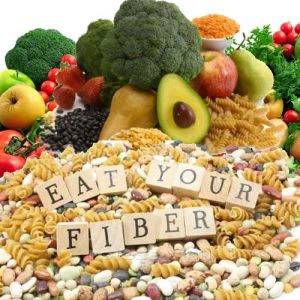Beans, Beans, the more ya eat, the more ya….
Beans, Beans, the more ya eat, the more ya…..

FIBER!!!! What is it? Dietary fiber, also known as roughage or bulk, includes the parts of plant food your body can't absorb or digest. Unlike other food components, such as fats, proteins or carbohydrates — which your body breaks down and absorbs — fiber isn't digested by your body. Instead, it goes through your stomach, small intestine, on to the colon and then makes its appearance in the porcelain thrown.
Fiber has two different classifications, soluble and insoluble.
Soluble fiber: Dissolves in water. Research has shown it can help lower blood cholesterol and glucose levels. Soluble fiber is found in oats, peas, BEANS, apples, citrus fruits, carrots and many other foods.
Insoluble fiber: Promotes the movement of “material” through your digestive system and makes those poops bulky…..SO, insoluble fiber can be helpful for constipation or irregular stools. It can be found in things such as whole-wheat flour, wheat bran, nuts, beans and vegetables, such as cauliflower, green beans and potatoes.
Benefits of a high-fiber diet
A high-fiber diet has many benefits, which include:
- Normalizes bowel movements. Dietary fiber increases the weight and size of your stool and softens it. A bulky stool is easier to pass, decreasing your chance of constipation. If you have loose, watery stools, fiber may help to solidify the stool because it absorbs water and adds bulk to stool.
- Helps maintain bowel health. A high-fiber diet may lower your risk of developing hemorrhoids and small pouches in your colon (diverticular disease). Some fiber is fermented in the colon. Researchers are looking at how this may play a role in preventing diseases of the colon.
- Lowers cholesterol levels. Soluble fiber found in beans, oats, flaxseed and oat bran may help lower total blood cholesterol levels by lowering low-density lipoprotein, or "bad," cholesterol levels. Studies also have shown that high-fiber foods may have other heart-health benefits, such as reducing blood pressure and inflammation.
- Helps control blood sugar levels. In people with diabetes, fiber — particularly soluble fiber — can slow the absorption of sugar and help improve blood sugar levels. A healthy diet that includes insoluble fiber may also reduce the risk of developing type 2 diabetes.
- Aids in achieving healthy weight. High-fiber foods tend to be more filling than low-fiber foods, so you're likely to eat less and stay satisfied longer. And high-fiber foods tend to take longer to eat and to be less "energy dense," which means they have fewer calories for the same volume of food.
http://www.mayoclinic.org/healthy-lifestyle/nutrition-and-healthy-eating/in-depth/fiber/art-20043983
Adults are supposed to consume about 20-30 grams of fiber each day, the average American only gets about half that amount! Below is a higher fiber recipe to try!
Now, I know you are excited to add fiber to your diet, BUT adding too much fiber too quickly, can promote those crampy, bloating, gas bubbles that make you keel over in pain - you know exactly what I’m talking about…..the ones you think may kill you, or even make you contemplate a visit to the ER …. Yep. Here is your warning to avoid those killer cramps…..increase fiber in your diet gradually over a period of a couple weeks or so. This allows digestive system to adjust to the change.
Also, don’t forget to drink plenty of H2O…. fiber works best when it absorbs water, making your stool soft and bulky. Yes, we said soft and bulky.
HIGH FIBER RECIPES
- Whole-Wheat Spaghetti with Swiss Chard and Pecorino Cheese
- White Bean Chili
- Purple Magic Smoothie (28g of Fiber)
-HW
Monday
8:00am - 6:00pm
Tuesday
8:00am - 2:00pm
Wednesday
8:00am - 6:00pm
Thursday
8:00am - 3:00pm
Friday
8:00am - 3:00pm
Saturday & Sunday
Closed
Gulf Coast Spine & Sport, LLC
2240 Venetian Ct, Unit A
Naples, FL 34109



